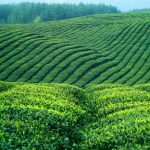Compared with green tea, black tea is a little descendant. Its origin is said to…

by vinux
- January 14, 2019
- 2,081
- 0
The process of black tea production involves an intriguing chemical reaction, predominantly the enzymatic oxidation of tea polyphenols. This transformation causes a significant change in the chemical composition of fresh tea leaves, leading to a striking reduction of more than 90% in tea polyphenols. As a result, novel elements such as theaflavins and thearubigins emerge, and the aromatic substances undergo a remarkable increase, giving black tea its distinct attributes of black tea, red soup, red leaves, and sweet alcohol.
The Chinese variety of black tea, specifically the black tea of Tuen Mun, is widely renowned for its superb quality, securing its place as the second-largest tea in China.
To fashion black tea, new tooth leaves from a suitable tea tree variety serve as the fundamental raw material, subject to several essential processes, including withering, cutting, fermentation, and drying. Withering, a critical phase of black tea production, contributes significantly to the final blend, which eventually earns the moniker “black tea” due to the resulting tea soup and the bottom color after dry tea brewing.









